[Interview]: BERNARDA CONIČ: Parallel Worlds Photography Exhibition
The article is related to the photography exhibition ”Parallel Worlds”, which was displayed from November 3, 2020 – November 30, 2020, in the Mergentaler Street Gallery of the Layer House and the TAM-TAM Institute.
interview by: Lucija Klauž

Can you comment on the title “Parallel Worlds” and “Melting Paradise“? How do these two series connect if they do?
The title ”Parallel Worlds” derives from the idea of alternate reality or the existence of parallel worlds. The hypothesis says that with every groundbreaking decision, an alternative reality emerges, where a different reality occurs in parallel with our reality. With such an idea, we begin to wonder what it would be if … I began to think about the question of what the world would be like today if humanity did not interfere with nature. I answer this question visually. I create a world that mirrors ours but in an alternative reality.






The title Melting Paradise stems from environmental issues. Paradise is a metaphor for our planet, which is slowly “melting” due to the constant rise in the average temperature of the atmosphere and oceans. Planet earth was a paradise and a source of life before human intervention. This Paradise has begun to be destroyed by man, and it is a matter of time before he will destroy it to the end. I depict ”Melting Paradise” through analog photographs of landscapes that I chemically and thermally process to make the surface of the emulsion begin to melt. Thus, in a way, I symbolically destroy the earth (which are photographs of landscapes), just as man destroys nature.
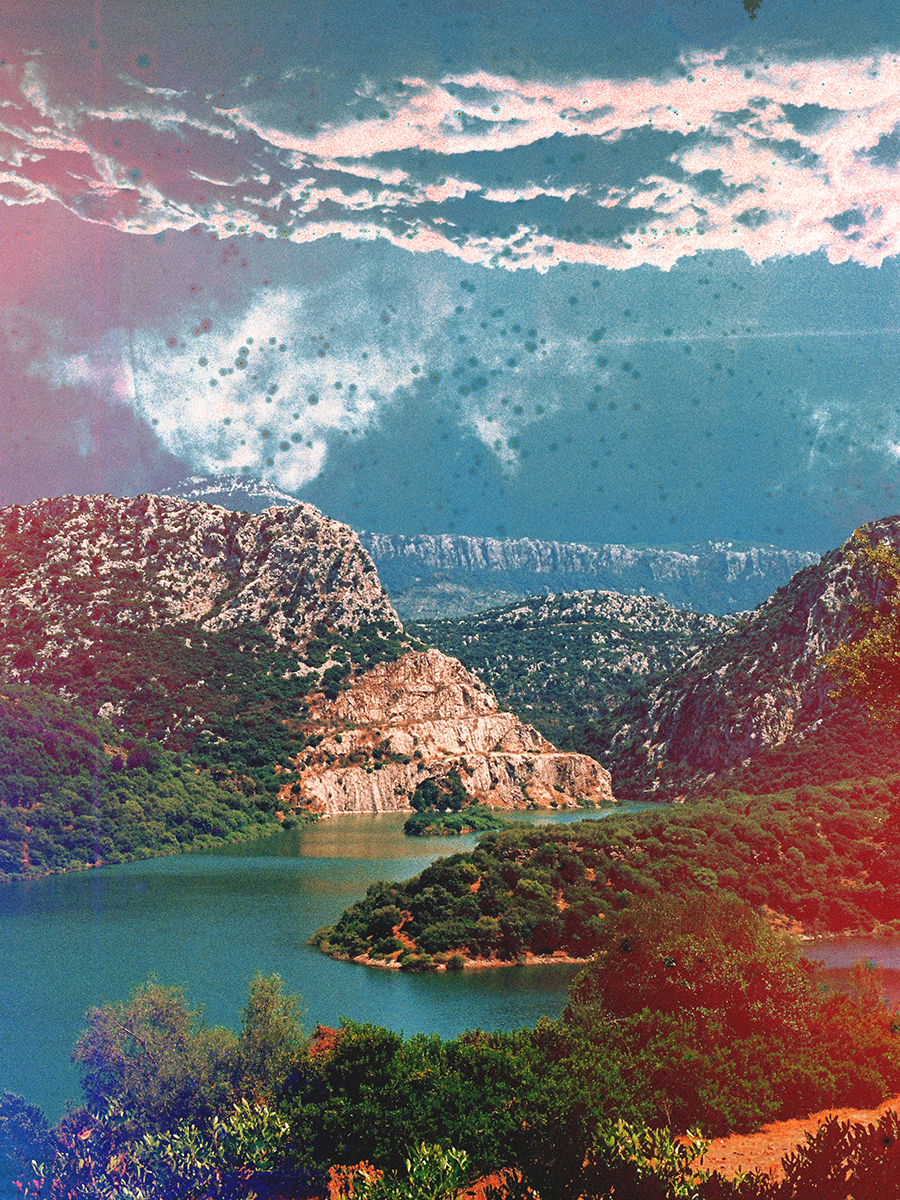
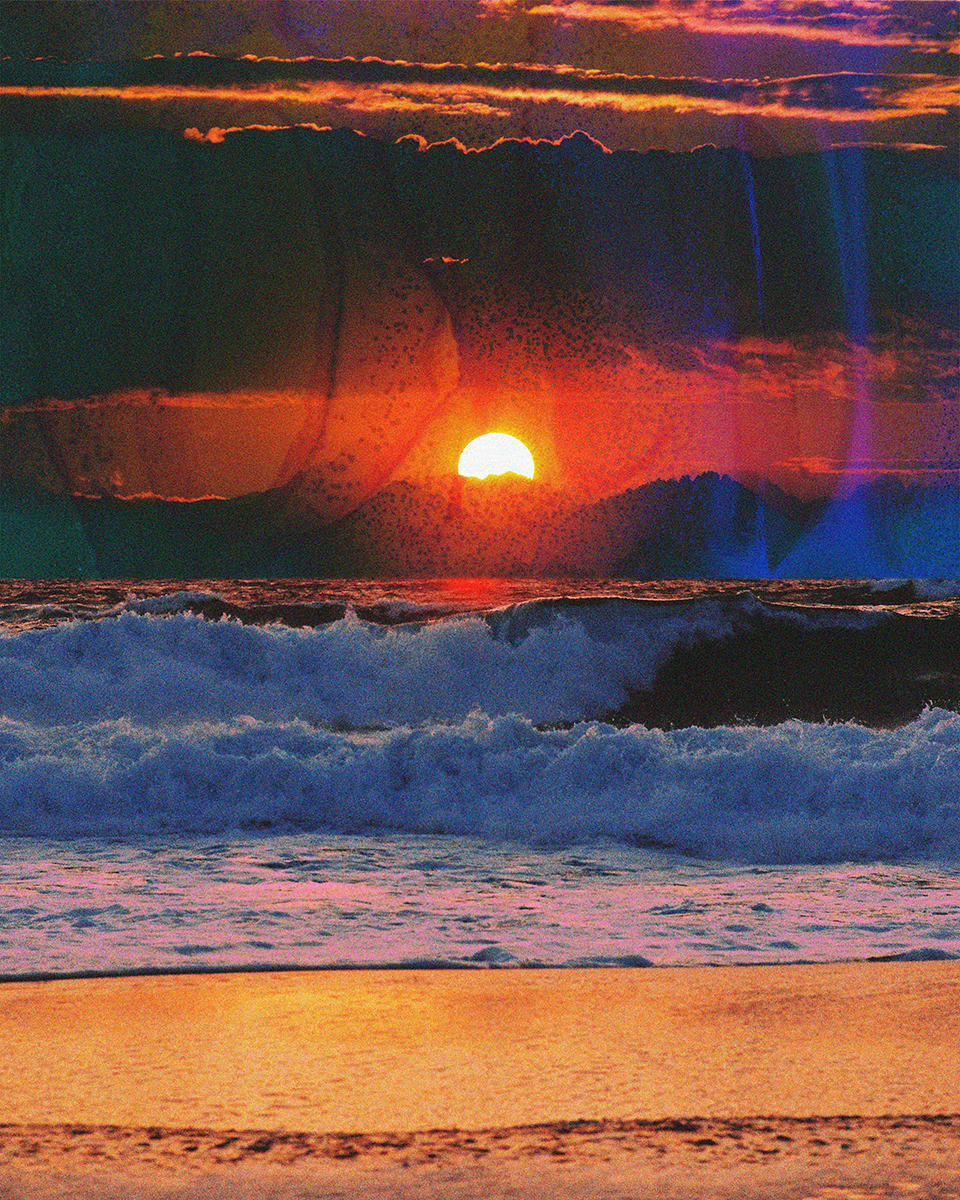

These two projects are interconnected by theme and are mirrored in a way. One depicts one reality and the other another. The” Melting Paradise” series depicts the consequences of human encroachment on nature, while the ”Parallel Worlds” series depicts an alternative reality where a man does not encroach on the environment.
How does ”Melting Paradise” predict the theme of global warming? Can it be interpreted as a feeling of disillusionment of reality in man’s relationship to the environment?
That’s right. Most do not seem to be aware of the seriousness of global warming and environmental issues in general. Most seem to close their eyes and make fun of the people we care about. For many, the most important thing is that they will live comfortably throughout their lives, and many are not ready to change anything that could positively affect the environment’s future. Otherwise, the biggest culprits for global warming are industries burning fossil fuels and cutting down rainforests and livestock. Nevertheless, each individual can increase or decrease additional environmental pollution through their actions.
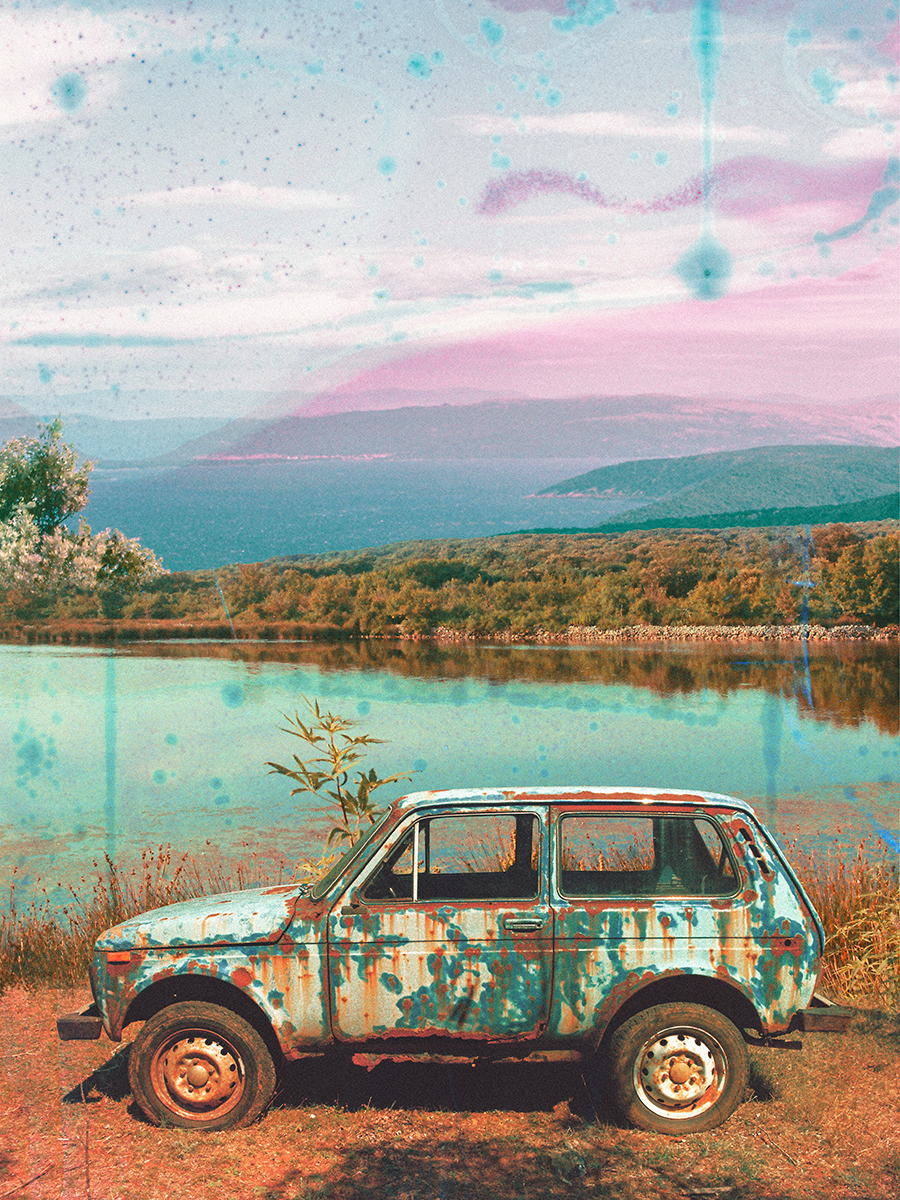

How do the medium of analog film and your processing of it tell the story of global warming? What process do you use to destroy these photographs?
The medium of the analog film plays its role much better than digital photography in telling the story of global warming. Analog film is the physical form of photography, while digital photography is merely a virtual image representation. The film can thus be physically manipulated, which gives completely different results. I “destroy” the film with various procedures, such as “boiling” in hot water, exposing the film to high temperatures in the oven, soaking the film in different liquid substances… When I was still at the academy, I had the opportunity to use a darkroom, where I also experimented with developing color positives. From “destroyed” films, I developed and enlarged photographs on photographic paper, which I further “destroyed” by adding a fixer and developer at the wrong moments and not in the right quantities.

Why did you decide to show idyllic images in your own way, given that you are highlighting the issue of global warming in a photography exhibition?
I show idyllic and heavenly images because I show a parallel world or an alternative reality where human does not interfere with the environment. I depict what the world could be like if humanity would respect nature. It seems essential that we talk about climate in a language that is not always gloomy and destructive. I think it’s crucial that we create things that have a positive narrative. Positive visual communication is more encouraging and can act as a focal point and inspire hope for a better tomorrow. I love the statement by the German painter Gerhard Richter: “Art is the highest form of hope.”
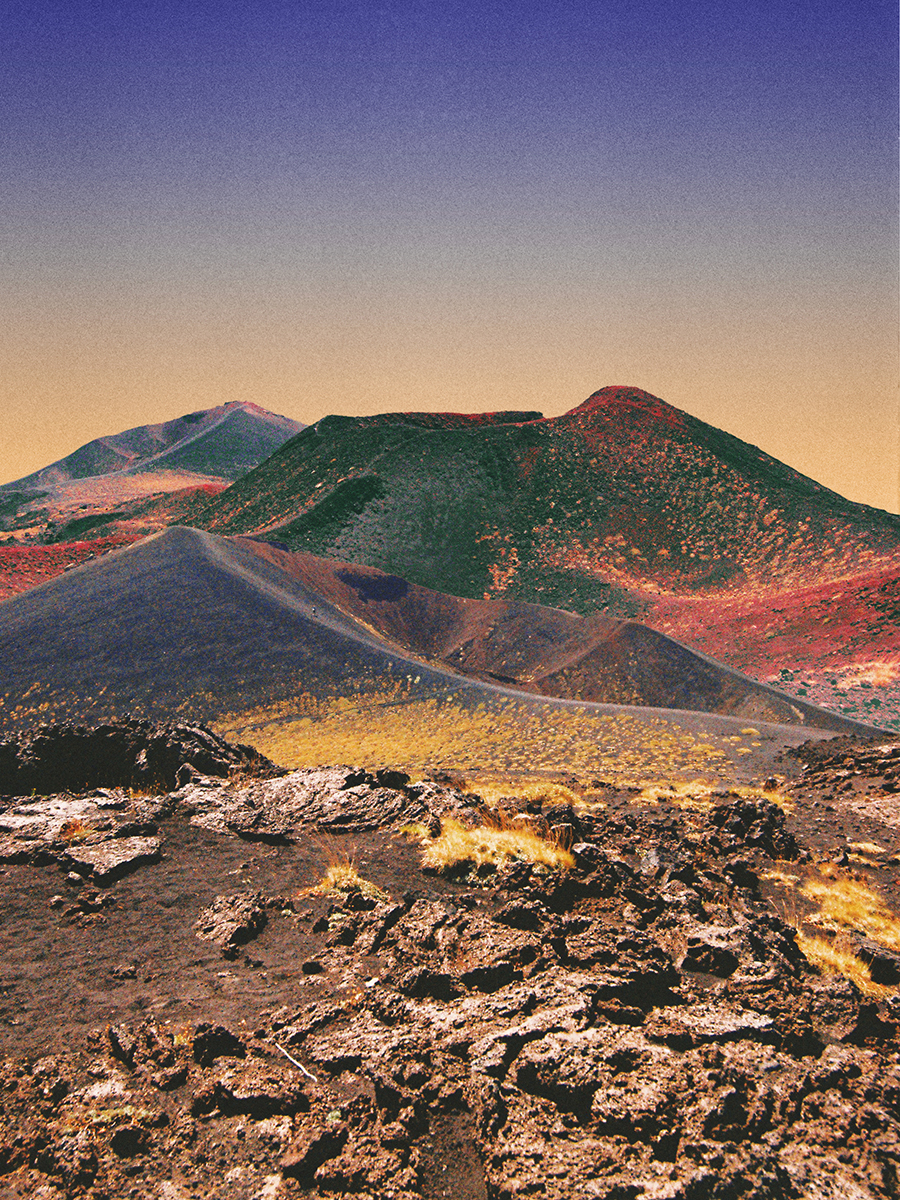
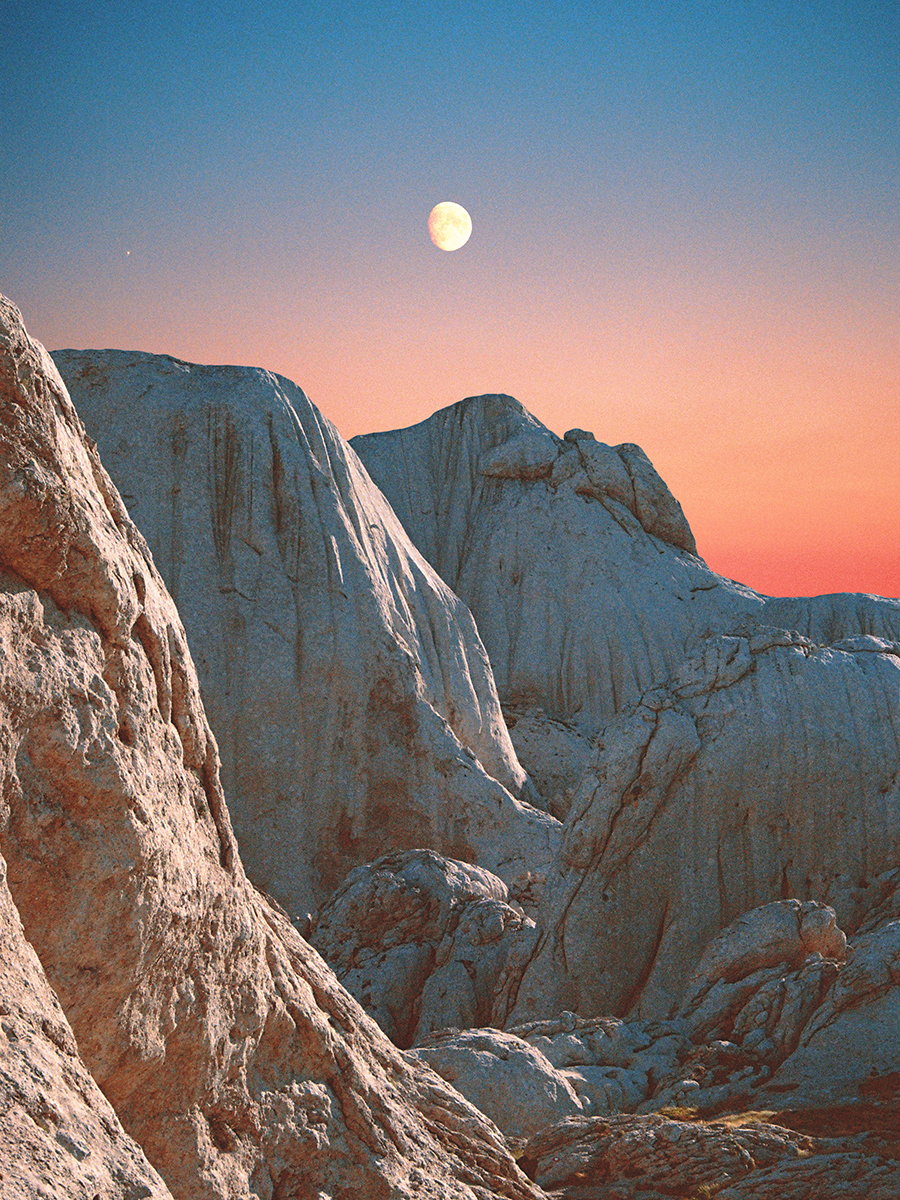
Do you think this photography exhibition has an activist effect? Why?
This project has an activist effect as the viewer delves into it. Each individual interprets visual art in their own way. Indeed, the series is not activist at first glance. We need to look longer and deeper to accept the message. Direct activism seems too intrusive to me. I prefer more subtle persuasion.
How does the analog photography technique justify your “think more, shoot less” principle?
Even with the decision to pick up an analog camera and film, we accept that we would have to think much more about each subject before taking the photo. The photographic film roll has only 24 or 36 shots, 120 medium format film even less! A memory card with 64 GB and more can be inserted into the digital camera, which is enough for thousands of shots. The technique of analog photography forces us to calm down, think and pay more attention to the choice of subject, framing, and settings. When I go on a photo expedition with an analog camera, I come back with fewer shots but with much better photographs than when I take photos digitally.
What do you think is different about exhibiting in a public space compared to showing in a gallery?
When exhibiting in a public space, you reach many more types of people than when displaying in a gallery. Some people never step into a gallery. They are simply not interested in it or feel they don’t belong there. Art in public space appeals to all by-passers, not only cultural enthusiasts but also salesmen, farmers, businessmen, chefs… This is especially important when we want to communicate something to a larger group of people.

Given the issues it addresses, was the series of photographs ”Parallel Worlds” intended explicitly for placement in public space?
The series ”Parallel Worlds” was not intended exclusively for public space. Still, the fact that I had the opportunity to place the series in public space is definitely a big plus for the reasons mentioned above. The exhibition should be displayed in the outdoor section and the indoors of Layer House, but due to the covid restrictions, the inner part of the exhibition did not happen. However, we are still waiting for the release of regulations that would allow us to set up the show indoors. The optimistic plan is in mid-December.

What do you think the placement in public space contributes to this work? What does art in public space contribute to the place itself?
Art in public space transforms the place in a way. It adds character and visibility to an area, whether urban or natural. Humans are visual beings, and visual memory is the strongest. Public street art thus contributes to the orientation around the urban environment. When we think of Metelkova, we remember its colorfulness, which characterizes it because of the works of art that stand there or are incorporated into it. It transforms space and tries to influence society when it comes to activist art.
What else do you do? Are you working on any new projects? What are your plans?
The ”Parallel Worlds” project is timeless, has no beginning or end, is always in the process, and constantly continues. The photography exhibition at Layer House definitely does not mark the end of this project. In addition, I work with many other things. I am currently collaborating with various international musicians and creating artwork for album covers. Due to the lockdown, I’ve been on the computer most of the time lately and working for clients. I miss photo expeditions, and I’m counting down the time when I will be able to freely photograph landscapes again. After the lockdown, I will continue with photography courses, which I run at the NIČ-ART art school. I don’t plan on much as the current times are uncertain. I try to live in the present and keep my blood calm.
Do you have any advice for young artists embarking on an independent journey?
Once you get out of school, college, everything is different. You become independent and also free. Since mentoring is gone, you can really start creating what you feel. School gives you knowledge and breadth, but it doesn’t prepare you for the real world. I advise young artists to get the status of ”self-employed professional in culture” immediately after finishing their studies. Create for at least an hour every day. Apply to open calls. Try to make money with your artwork, and don’t work for free. Never. Set a price for your work or service. A lot of people will say to you, “Ah, you’re a master of it; you’ll have this done in half an hour.” Don’t agree to it; you master this craft because you’re talented, and you’ve been learning about it for 10 years. It is difficult in Slovenia. I feel that it is hard for people here to pay for work that is in any way related to art. I wish all artists to make a living from their art. Unfortunately, this is not always possible. That is why I encourage you not to limit yourself to Slovenia. Don’t let your creativity die, even if you have a job unrelated to art. Create in your spare time, as much as possible, every day.
Bernarda Nibera Conič is a Visual Artist with a Master’s in Visual Communication Design. You can also follow her on Instagram!

No Comments